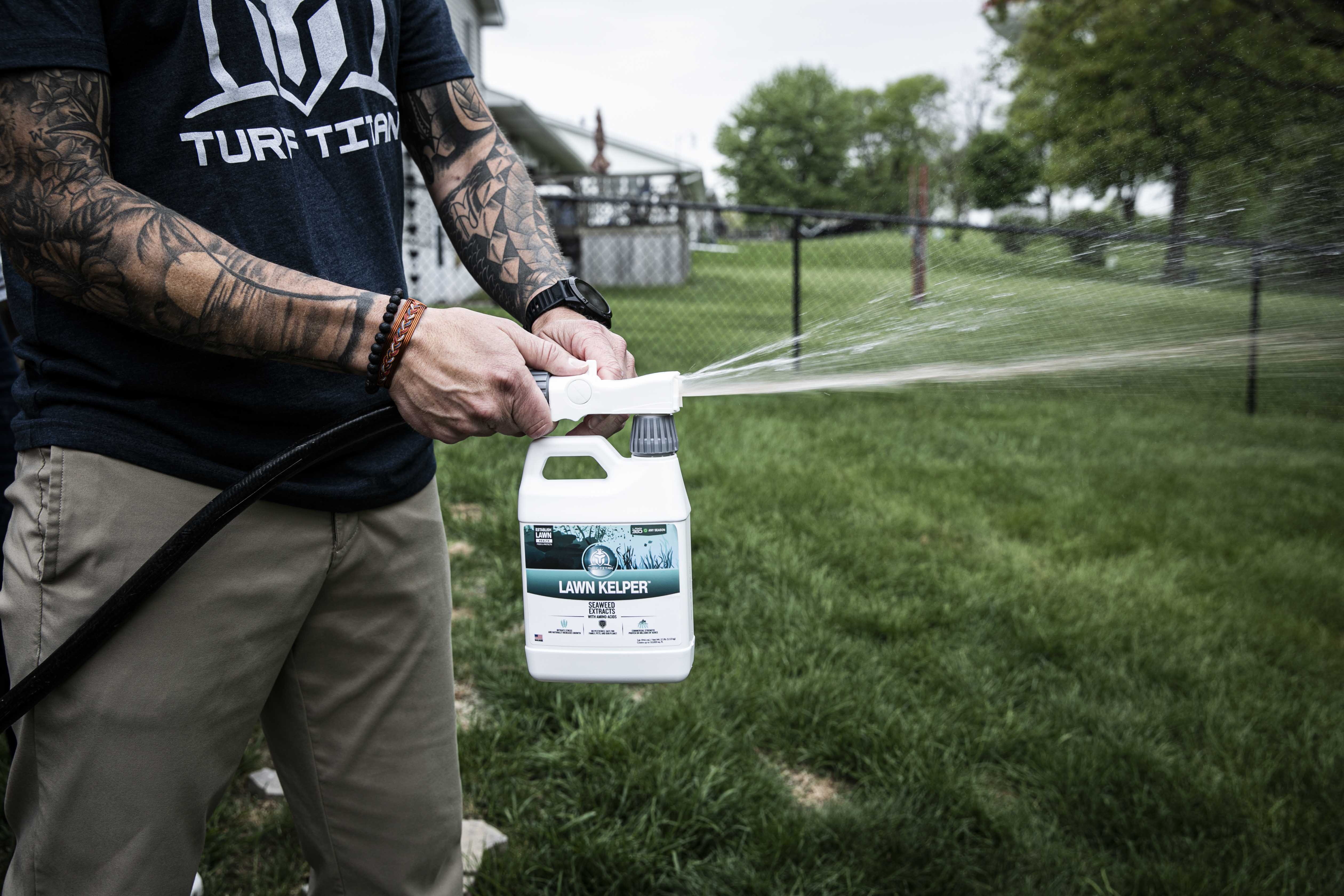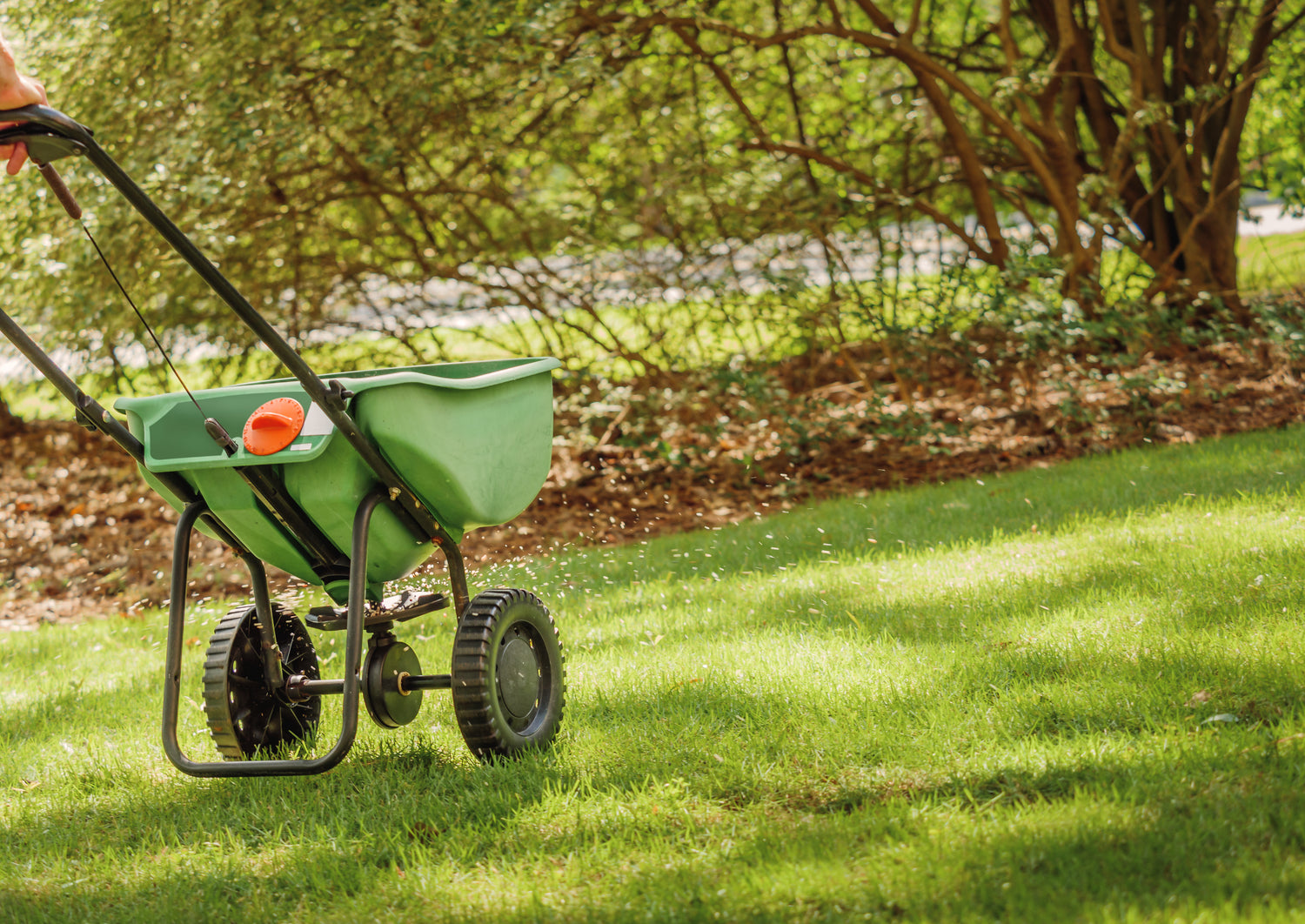If your lawn is in need of a little love after a brutal summer, consider overseeding!
Rather than starting from scratch, overseeding allows you to spruce up your existing lawn for lush results. Grass that’s yellowing, thinning, patchy, or overwhelmed by thatch can greatly benefit from this process.
The best time of year to overseed can vary a bit by location and grass type, but it’s generally between late summer and early fall when conditions are mild around 50 degrees. A day after rainfall when the ground is damp but not muddy and when there’s minimal wind that could blow your seed away is ideal.
Begin by making sure your grass is free of weeds — manually removing them at this point is best. You’ll also want to get any stones, pet droppings, and any other potential obstructions out of the way.
Next, set your mower blade low and mow grass to about 1 inch in length.
Then remove built-up thatch and aerate your lawn with a formula like Thatch Buster or manually by raking the entire area you’re overseeding.
If you haven’t fertilized your grass recently, you can do so before overseeding to give grass and seed boost. Apply fertilizer in the evening or an overcast day to avoid burning your existing grass.
Make sure soil is moist — but not saturated — either from recent rain or a light, even watering.
Invest in a high-quality seed designed to thrive in your region for the best results. Carefully sprinkle or use a spreader for even application, according to seed instructions. Focus on bare or thinning patches.
After all seed is down, gently rake to ensure it makes solid contact with soil and is less likely to be eaten by animals. You won’t need to add topsoil after overseeding, but applying compost could help encourage germination and growth. This is also a great time to apply Lawn Commander and/or Root Booster to help your new grass get started.
Water your overseeded lawn little and often, usually everyday for the first three weeks. And leave it undisturbed by foot traffic for at least two weeks. These steps will help it establish and flourish.
When it’s time to mow your lawn for the first time next spring, set your mower blade to 2 inches.
Follow these tips now, and you’ll have a thick, lush lawn next year!









Leave a comment
This site is protected by hCaptcha and the hCaptcha Privacy Policy and Terms of Service apply.